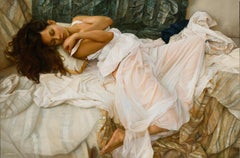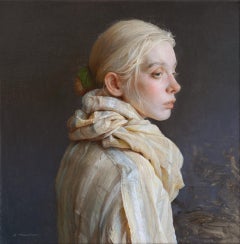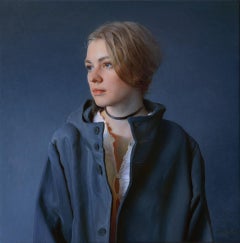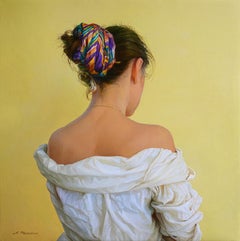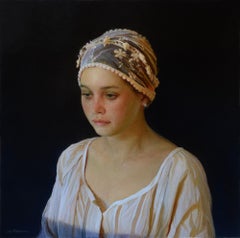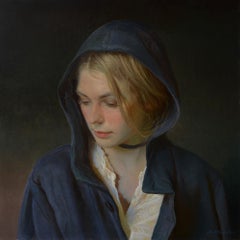Serge Marshennikov Oil Painting
2010s Photorealist Portrait Paintings
Oil, Canvas
2010s Photorealist Portrait Paintings
Canvas, Oil
2010s Photorealist Portrait Paintings
Canvas, Oil
2010s Photorealist Portrait Paintings
Canvas, Oil
Recent Sales
2010s Photorealist Portrait Paintings
Oil
2010s Photorealist Portrait Paintings
Oil
People Also Browsed
21st Century and Contemporary Italian Mid-Century Modern Flush Mount
Metal
Antique 19th Century Italian Renaissance Revival Wardrobes and Armoires
Wood
Antique 19th Century French Louis XVI Cabinets
Ormolu
Antique 19th Century German Black Forest Side Chairs
Walnut
Vintage 1970s Italian Baroque Tables
Silver
Antique 19th Century Italian Baroque Rocking Chairs
Silver Leaf
Antique 1880s French Louis XVI Centerpieces
Crystal, Bronze
Mid-20th Century Austrian Black Forest Taxidermy
Fur
Antique Early 1900s French Belle Époque Chandeliers and Pendants
Bronze
2010s Italian Centerpieces
Crystal, Gold, Brass
Antique Early 19th Century Russian Neoclassical Vases
Porcelain
Antique 19th Century French Louis XV Desks
Brass, Ormolu
Antique 19th Century French Napoleon III Vases
Bronze, Ormolu
Mid-20th Century American Brutalist Abstract Sculptures
Metal, Steel
Antique Early 1900s French Louis XIV Lanterns
Bronze
Antique Early 1900s French Rococo Revival Lanterns
Metal, Bronze
A Close Look at Photorealist Art
A direct challenge to Abstract Expressionism’s subjectivity and gestural vigor, Photorealism was informed by the Pop predilection for representational imagery, popular iconography and tools, like projectors and airbrushes, borrowed from the worlds of commercial art and design.
Whether gritty or gleaming, the subject matter favored by Photorealists is instantly, if vaguely, familiar. It’s the stuff of yellowing snapshots and fugitive memories. The bland and the garish alike flicker between crystal-clear reality and dreamy illusion, inviting the viewer to contemplate a single moment rather than igniting a story.
The virtues of the “photo” in Photorealist art — infused as they are with dazzling qualities that are easily blurred in reproduction — are as elusive as they are allusive. “Much Photorealist painting has the vacuity of proportion and intent of an idiot-savant, long on look and short on personal timbre,” John Arthur wrote (rather admiringly) in the catalogue essay for Realism/Photorealism, a 1980 exhibition at the Philbrook Museum of Art, in Tulsa, Oklahoma. At its best, Photorealism is a perpetually paused tug-of-war between the sacred and the profane, the general and the specific, the record and the object.
“Robert Bechtle invented Photorealism, in 1963,” says veteran art dealer Louis Meisel. “He took a picture of himself in the mirror with the car outside and then painted it. That was the first one.”
The meaning of the term, which began for Meisel as “a superficial way of defining and promoting a group of painters,” evolved with time, and the core group of Photorealists slowly expanded to include younger artists who traded Rolleiflexes for 60-megapixel cameras, using advanced digital technology to create paintings that transcend the detail of conventional photographs.
On 1stDibs, the collection of Photorealist art includes work by Richard Estes, Ralph Goings, Chuck Close, Audrey Flack, Charles Bell and others.
Finding the Right Portrait-paintings for You
An elegant and sophisticated decorative touch in any living space, portrait paintings have remained popular throughout the years and are widely loved pieces of art for display in many homes today.
Portrait paintings are at least as old as ancient Egypt, where realistic, lifelike depictions of the recently deceased — commonly known as “mummy portraits” — were painted on wooden panels and affixed to mummies as part of the burial tradition.
For centuries, painters have used portraiture as a means of expressing a subject’s nobility, societal status and authority. Portraits were given as gifts in Renaissance Europe, and a portrait artist might have been commissioned to help mark a significant occasion such as a wedding or a promotion to high office. Prior to the advent of photography, which eventually replaced painted portraits as a quicker and more efficient way of capturing a person’s essence, the subject of a portrait had to sit for hours until the painter had finished. And during the 18th century in particular, if an artist commissioned for a portrait struggled with how to adequately memorialize and capture a subject’s likeness, sometimes a portrait painting wasn’t completed for up to a year.
Whether it’s part of the gallery-style approach to your living-room or dining-room walls or merely inspiration as you devise an eye-grabbing color scheme in your home, a portrait painting is a timeless decorative object for any interior. A landscape painting or sculpture might give you the kind of insight into a specific region of the world or a different culture that you can ascertain only through art. Similarly, when you take the time to learn about the subject of a portrait painting that you bring into your home — the sitter’s history, the relationship between the sitter and the artist should one exist, the story of how the portrait came to be — that work can become intensely personal in addition to its place as an object for an art-hungry corner of your apartment or house.
On 1stDibs, visit a vast collection of famous portrait paintings or works by emerging artists. Search by medium to find the right portrait paintings for your home in oil paint, synthetic resin paint and more. Find portrait paintings in a variety of styles, too, including contemporary, Impressionist and Pop art, or search by artist to find unique works created by painters such as Mark Beard, Steve Kaufman and Montse Valdés.
